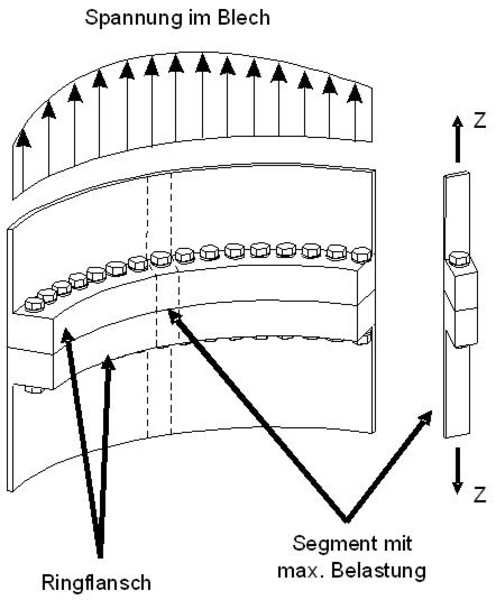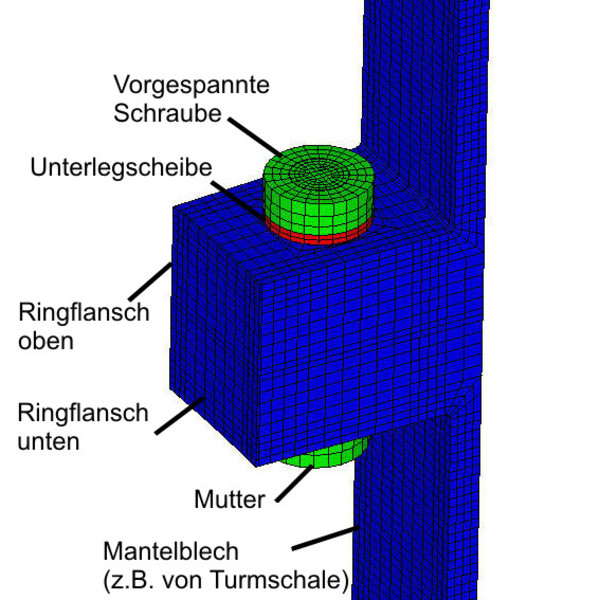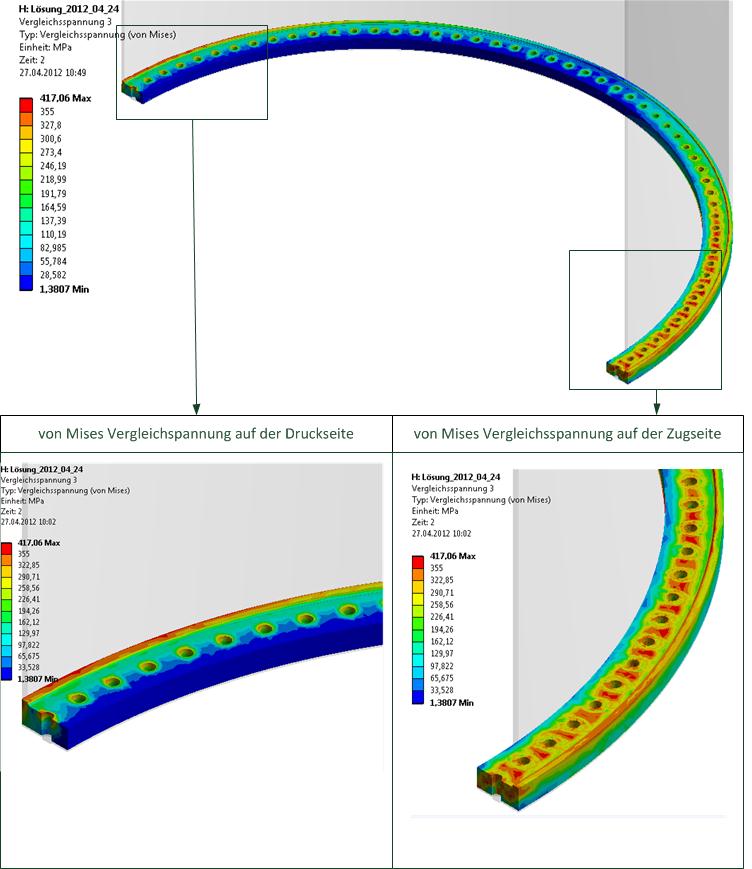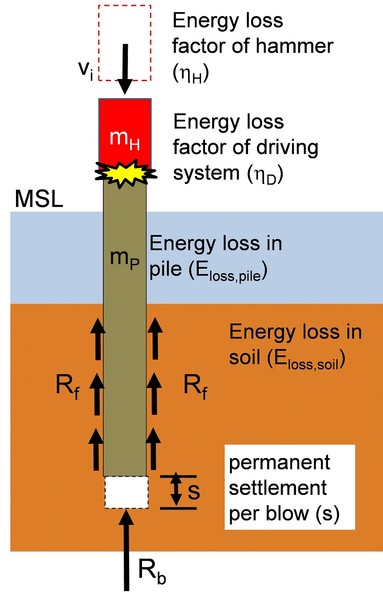The SKI Ingenieurges. mbH employs inter alia to with the structural behavior of Ring flange connections, taking into account imperfections. The following failure modes are first to be distinguished:
- Failure mechanism A: Bolt failure
- Failure mechanism B: Bolts failure and plastic hinge in the shell plate
- Failure mechanism C: Plastic hinges in the casing plate and flange
Ring flanges can be analyzed with the help of segment models or even half models, with prestressing forces can be controlled individually each bolt.











